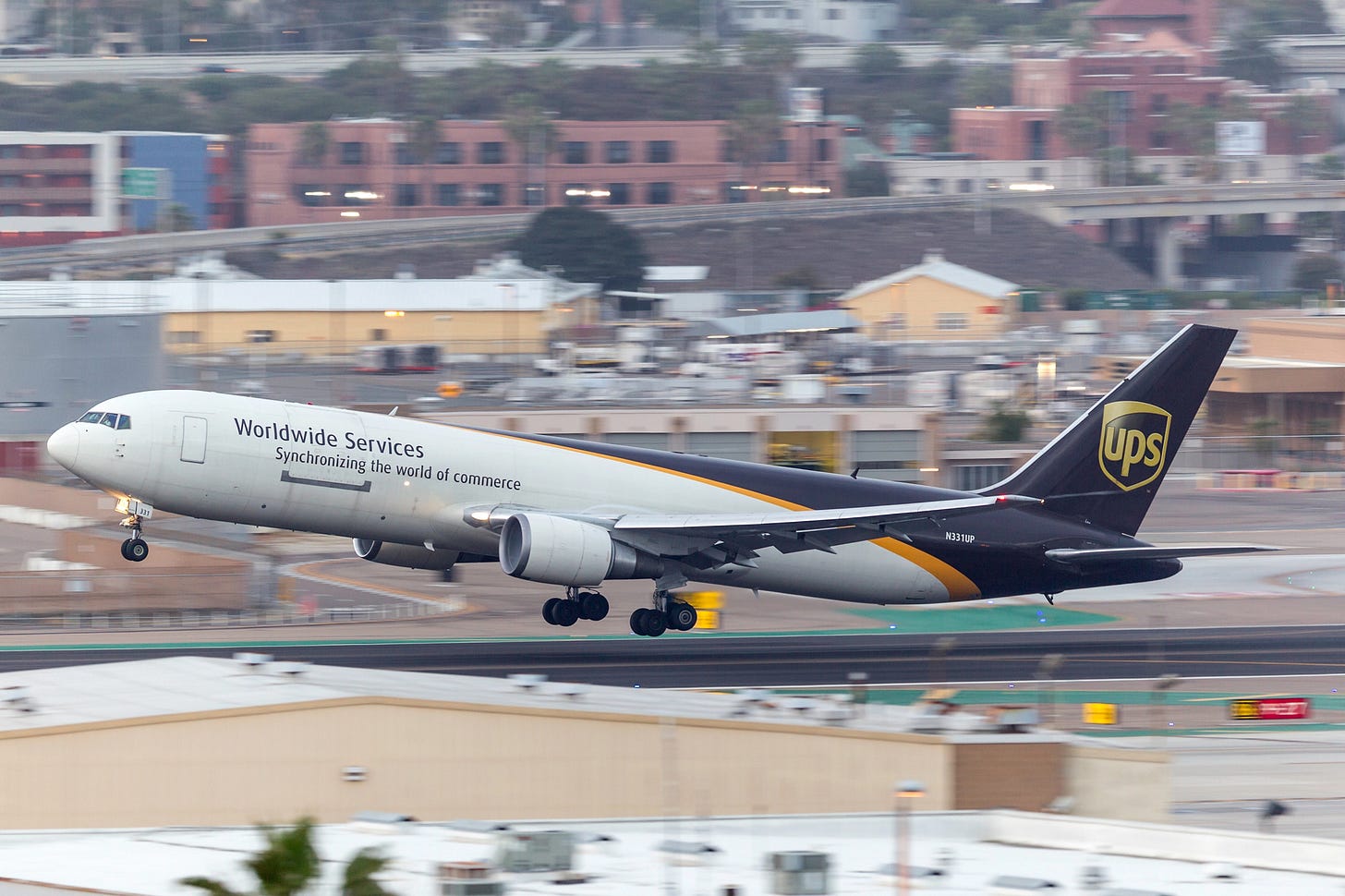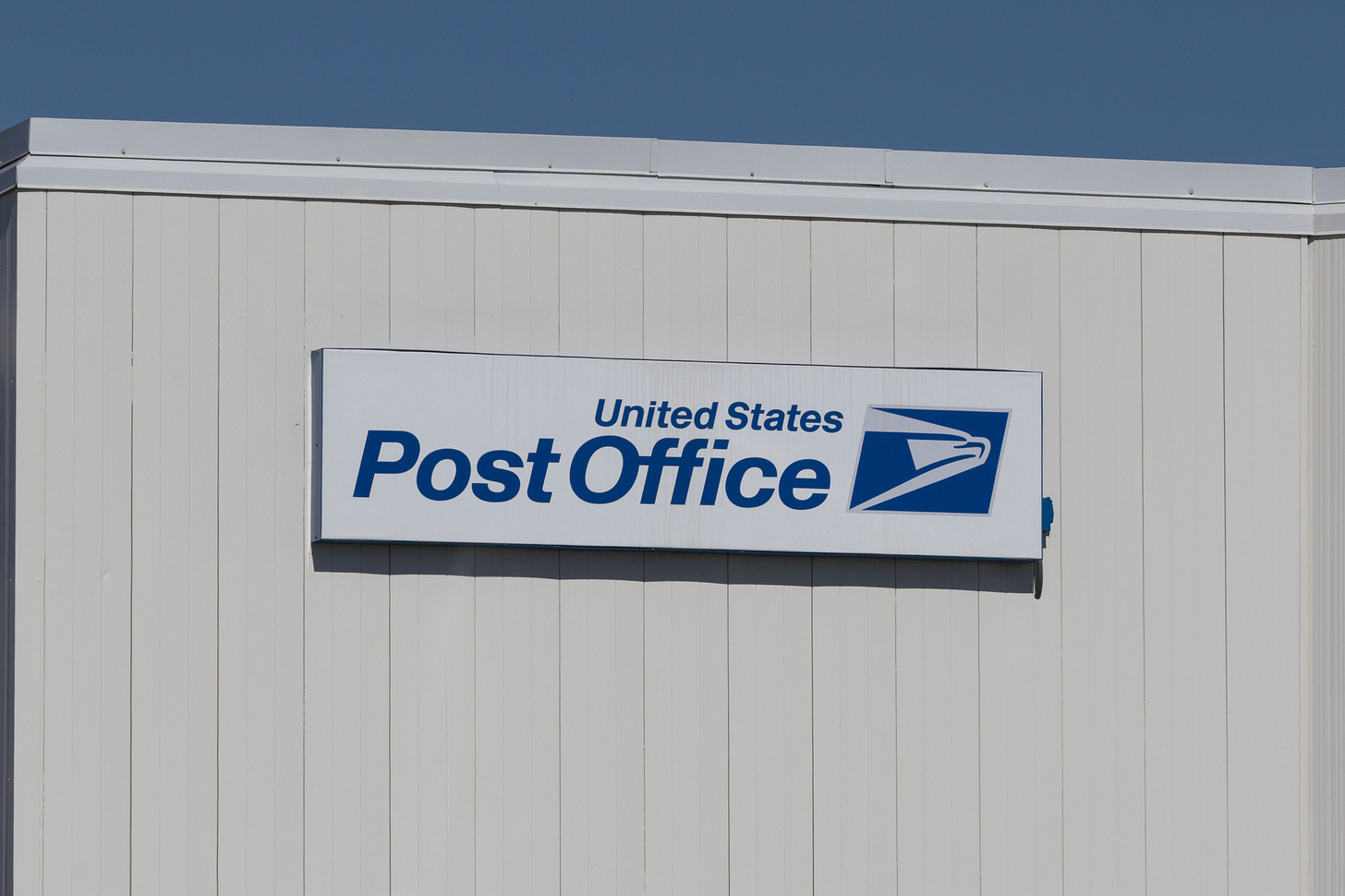USPS is benefitting from its new air cargo contract but is UPS?
The U.S. Postal Service (USPS) transitioned its primary air cargo contract from FedEx to UPS effective September 30, 2024. The contract runs until March 2030 and has a total estimated value of over $10 billion for the contract period.
Under the new agreement, UPS will carry First-Class Mail, Priority Mail, and some Priority Mail Express services, while FedEx will continue to transport mail requiring special handling, such as hazardous materials (HAZMAT), live animals, and perishable goods.
The Postal Service expects this new agreement will help achieve its operational and financial sustainability goals by consolidating volumes and reducing overall transportation costs.
The Office of Inspector General (OIG) conducted a study of the effectiveness of the new contract during the first quarter of its implementation. (A big thanks to Eric Kulisch for alerting the market of OIG’s study)
According to the OIG’s report, "Assessment of Changes to Air Transportation Contracts”, the new contract has, so far, lowered USPS’ costs, consolidated air stops, and increased flexibility with lower volume commitments and more planned capacity. Additionally, the new contract increases the required percentage of mail and packages transported on time compared to the previous contract.
Before the new contract, FedEx carried over 984 million pounds of air mail (71% of total air volume) from October 1, 2023, through September 30, 2024. For the same period, UPS was assigned 244 million pounds (18% of total air volume). However, in Q1 FY 2025 (October 1, 2024 – December 31, 2024), under the new agreement, the Postal Service assigned over 279 million pounds (85% of the total volume) to UPS and approximately 13 million pounds (4% of the total volume) to FedEx.
USPS Internal Issues
However, internally, the USPS is struggling to accurately measure service performance and ensure that the right items are routed to the correct carrier. The OIG, for example, found packages identified as HAZMAT mistakenly entering UPS’ network. Additionally, USPS employees at the surface feeder sites failed to perform the required scans.
This isn’t the first time that the USPS has struggled with measuring air performance. In November 2023, for example, the OIG reported that the USPS did not accurately plan air weight capacity on specific lanes for FedEx. As a result, the USPS paid FedEx about $25.7 million annually for unused capacity because it did not meet the minimum weight requirement. Additionally, the Postal Service did not reconcile minimum air weight commitments using its own calculation of actual weight tendered to the aviation supplier. Rather, it used the weight provided by FedEx without verifying its accuracy. Finally, postal employees are not performing the required scans of mail moving on surface feeder trips to UPS’ hub, thereby reducing the Postal Service’s visibility over the mail and its associated ability to schedule employees and operations efficiently. Additionally, the USPS overlooked a clause in the UPS contract that allows a later delivery time for a part of the mail tendered on Saturdays.
The USPS noted that it added a new reporting tool in January 2025 to more accurately reflect UPS’ performance and facilitate the reconciliation process beginning in Q2. It will be updated weekly by the end of April 2025 and will be shared with internal stakeholders.
UPS
“The USPS air cargo business fits beautifully with our strategy to grow our B2B business. To win, we put together an innovative and differentiated solution that leverages our integrated network and existing assets.” - UPS CEO Carol Tome during the Q1 2024 earnings call on April 23, 2024.
Indeed, instead of using its hub-and-spoke network, whereby UPS routes all air volume through its main air hub at Worldport, it will move volumes point-to-point using its regional gateways. “This allows for splits to occur outside of the network, so they'll be built in origin, and then we will bypass the main hub and go point to point,” Tome told analysts in 2024. “We also will use all of the assets of our integrated network, and that will allow us to actually optimize block hours,” Tome said.
During its announcement last year, UPS also noted it would not purchase any aircraft but planned to hire ‘less than 200 pilots’ to support the USPS contract.
In terms of reporting, UPS originally planned to record revenue and expenses associated with the USPS air cargo contract in the Supply Chain Solution Other line of its financial reporting. However, a change occurred during Q4 2024, based on a shift in UPS’ management reporting structure, whereby the USPS air cargo results were moved to UPS’ US domestic package segment instead. “This change aligns with how our chief operating decision maker reviews operating results to assess performance and allocate resources,” according to UPS’ 10-K 2024 report.
From a revenue perspective, thus far, it appears the USPS air cargo contract may be reported in the Cargo and Other line item – which makes sense from the year-over-year gains in this line item.
During Q4 2024, cargo and other revenue totaled $308 million, representing a 1183.3% increase from Q4 2023. For Q1 2025, cargo and other revenue reached $341 million, representing a 965.6% increase from Q1 2024.
If the USPS air cargo contract falls within this line item, UPS appears to be below the $1.7 billion annual amount of its $10 billion contract with the USPS.
However, both USPS and UPS may still be experiencing some initial growing pains.
So far, the contract is helping to fill UPS airplanes and will help offset a bit of Amazon's volume as UPS works to reduce its exposure to its largest customer. While $10 billion over five years is nothing to sneeze at, the USPS contract win is more a matter of pride in taking it away from FedEx, which had held the contract for over 20 years.
- Cathy
For more thoughts and shares, be sure to follow me on Twitter, BlueSky and LinkedIn.
I wear a number of hats these days. I’m also helping out the Reverse Logistics Association as a research manager, and at JOC, I help out as a research analyst and write a weekly LinkedIn newsletter, Freight Forward, summarizing JOC & other published articles and providing an outlook for the week ahead. In addition, be sure to check out my website and be sure to sign up to receive more blog posts.





